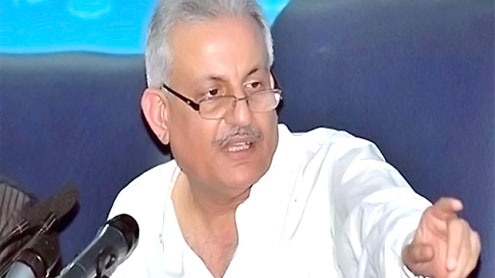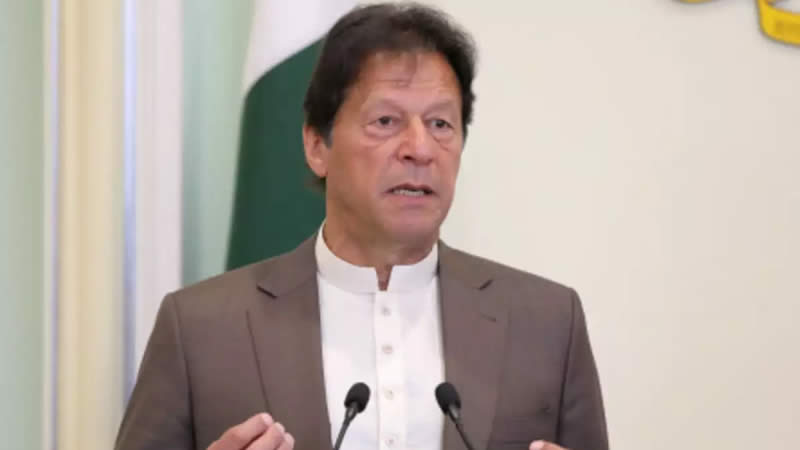 THE Khyber Pakhtunkhwa government spokesman, Mian Iftikhar Hussain, early this week said that a national consensus had been achieved on revival of executive magistracy in the country.“A committee under PPP Senator Raza Rabbani consulted the four provinces, which have shown their willingness to revive the executive magistracy,” Mr Hussain told a news conference on Monday last.According to him, the revival of magistracy system is essential for checking the spiraling prices of daily use items.Mr Hussain claims: “The devolution of power plan introduced by former military ruler Pervez Musharraf had dismantled the system to check market forces and thus allowed profiteers and hoarders to manipulate prices of commodities.”Executive magistracy has been an important feature of Pakistans basic governance structure, inherited from the British.Magistrates used to be officers from the executive branch of civil service, having certain powers specified under the Criminal Procedure Code (CrPC).
THE Khyber Pakhtunkhwa government spokesman, Mian Iftikhar Hussain, early this week said that a national consensus had been achieved on revival of executive magistracy in the country.“A committee under PPP Senator Raza Rabbani consulted the four provinces, which have shown their willingness to revive the executive magistracy,” Mr Hussain told a news conference on Monday last.According to him, the revival of magistracy system is essential for checking the spiraling prices of daily use items.Mr Hussain claims: “The devolution of power plan introduced by former military ruler Pervez Musharraf had dismantled the system to check market forces and thus allowed profiteers and hoarders to manipulate prices of commodities.”Executive magistracy has been an important feature of Pakistans basic governance structure, inherited from the British.Magistrates used to be officers from the executive branch of civil service, having certain powers specified under the Criminal Procedure Code (CrPC).
At the time of dismantling the magistracy system, these officers had the powers to try offences punishable up to three years imprisonment and were also supposed to handle bails in petty crimes besides maintaining law and order in their respective areas.They could disperse an unlawful assembly, as the police was supposed to assist these officers in use of force (baton charge, tear gas, blank fire or firing) against the rioters or protesters.Executive magistrates would also check prices of edible commodities in the markets and fine the profiteers besides awarding them imprisonment.This unique role of the officers, having both executive and judicial powers, raised some critical questions and finally led to the theory of separating executive from the judiciary.The Article 175(3) of the 1973 constitution said: “Judiciary shall be separated from executive within fourteen years from the commencing day.”Originally the timeframe given for this separation was three years in the 1973 Constitution, however, it was substituted by five years through the Constitutional (5th Amendment) Act 1976 (Act LXII of 1976).The Supreme Court of Pakistan in 1990s had given a judgment for bifurcation of executive from judiciary within six months.
However, in 2001, the system of executive magistrates was abolished from the CrPC, delegating all the powers once exercised by the executive officers to the judiciary.It is to be seen how the judiciary reacts to this issue, as efforts are being made at national level for what Mr Hussain claims “having a unified system of executive magistracy in the country.”The executive magistracy, if revived, can help bureaucracy to regain the glory it had lost in the wake of devolution of power plan, but achieving the primary objective of controlling soaring prices of commodities will require more than that.Politicians often speak the language of bureaucracy when it comes to price control. They consider doing away with executive magistracy as the main factor for the current mess we are dealing with.Market inspections by the executive magistrates may have been a deterrent against price spiral to some extent mainly in major urban towns, but it is not the panacea of all ill, as propagated these days. Just take for example, Islamabad Capital Territory still has this system, but the market there too seems free from any control.
In Khyber Pakhtunkhwa, the provincial cabinet had approved on July 28, 2008 revival of executive magistrates. In April 2009, executive magistracy was restored in Malakand division under the Nizam-i-Adl Regulation by delegating powers to district functionaries.Moreover, powers for exercising some special and local laws had also been delegated to the district and tehsil functionaries in the entire province almost a year back.The prices, however, are still on the rise here and there is a wide difference in the prices of commodities communicated to the government and the situation on ground.For example, the food department while responding a question shared the price list of edibles with the Khyber Pakhtunkhwa Assembly on Tuesday that was different from what the consumers are made to pay in the market.Stability in the market requires an integrated approach and it cannot be achieved by merely reviving the executive magistracy.
Demand and supply mechanism plays central role in stability of prices in free market economy and this can be achieved only when there is a real time information system about demand of commodities and the volume of supply.No department, neither at national or provincial level, has authentic data about the demand for commodities and quantum of supplies. Take for example, the federal government, which allows export of wheat on one hand while on the other, it imports the same commodity at higher rate when the price soars in the local market.Same goes for the export of livestock to Afghanistan. The Ministry of Food, Agriculture and Livestock has been allowing cattle export to Afghanistan without taking the local demands into account. This facility is misused to a greater extent. Exporters transport cattle to Afghanistan more than their allocated quota, causing increase in meat prices in the local markets.The foremost thing to do is to develop a system for generating reliable data to know the real demand for commodities and also the quantum of different crop yield. This can help in forecasting the prices and give sufficient time for planning and decision making. – Yahoonews











